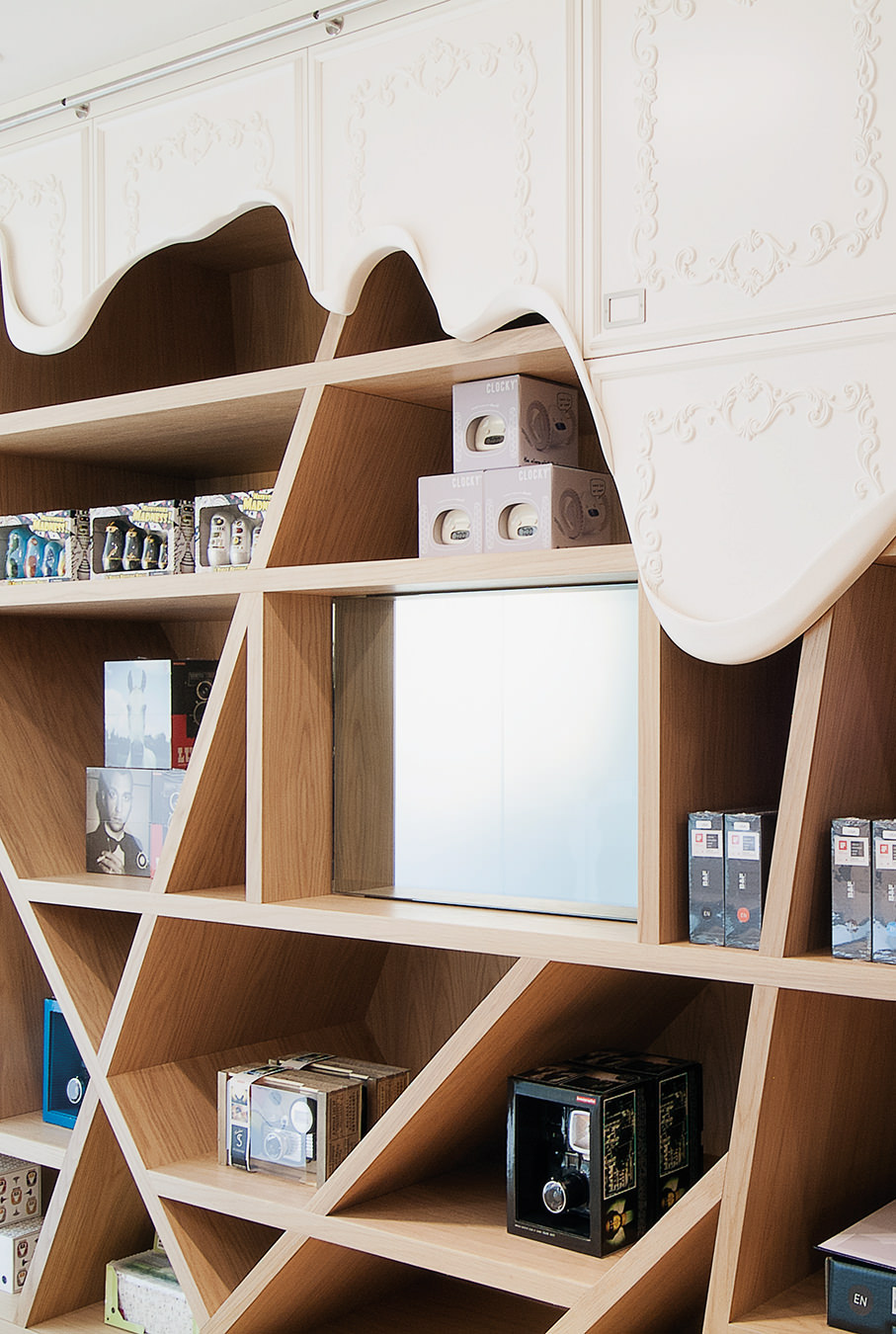-
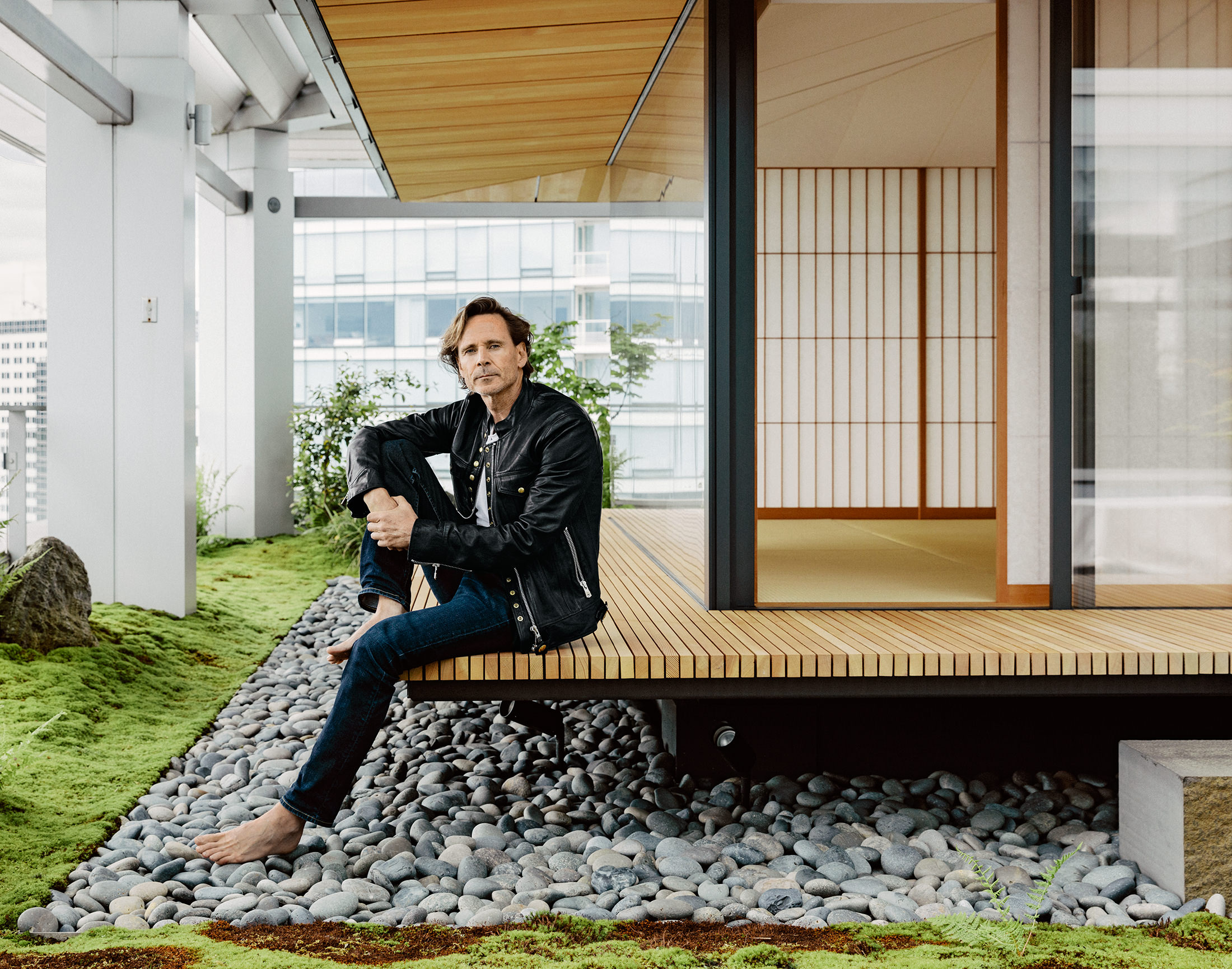
Ian Gillespie at The Tea House by Kengo Kuma, a Westbank project located on the 19th floor of Vancouver’s Shaw Tower.
-

Fairmont Pacific Rim, Vancouver.
-

The forthcoming development, Mirvish Village, Toronto.
-
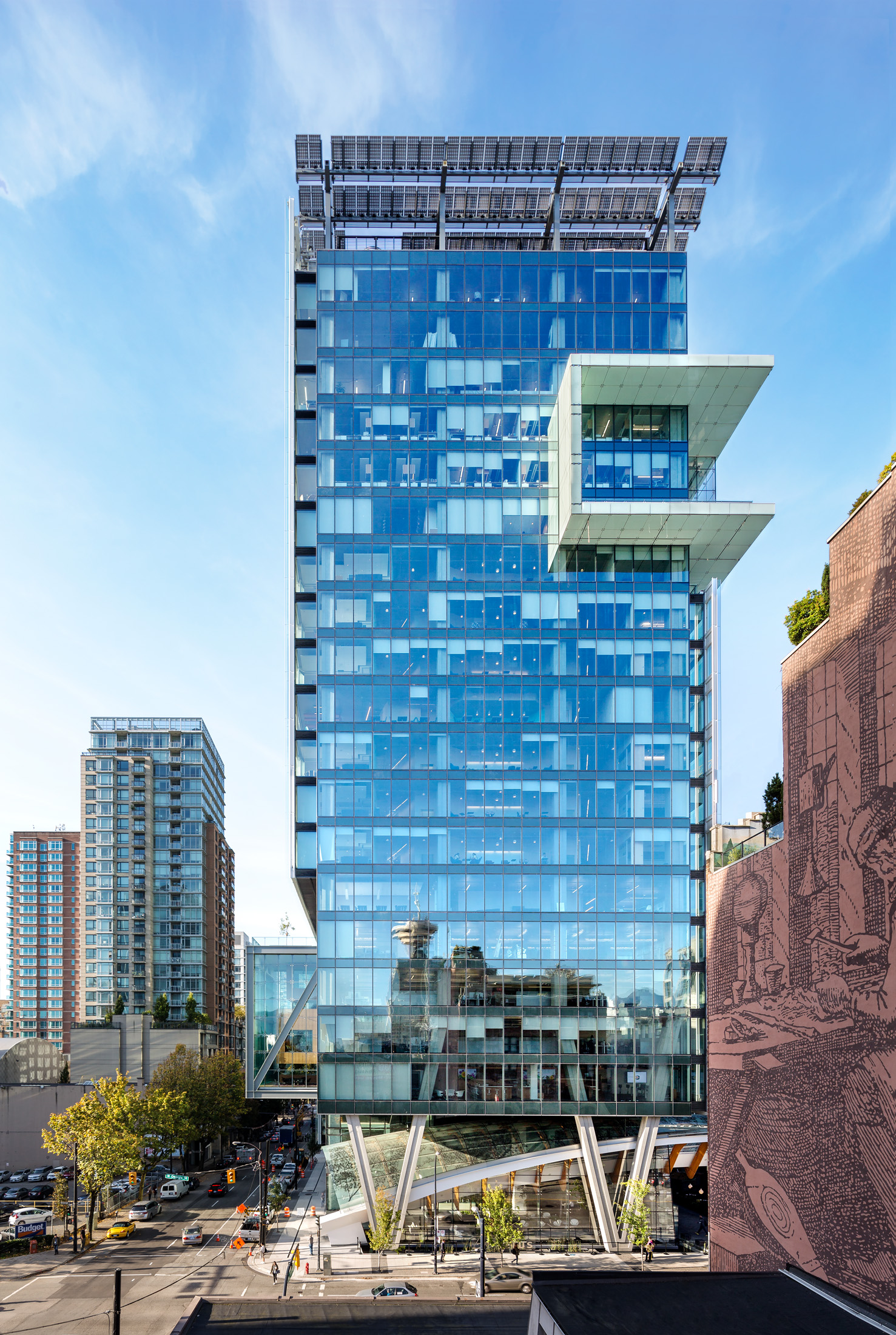
Telus Garden, Vancouver.
-
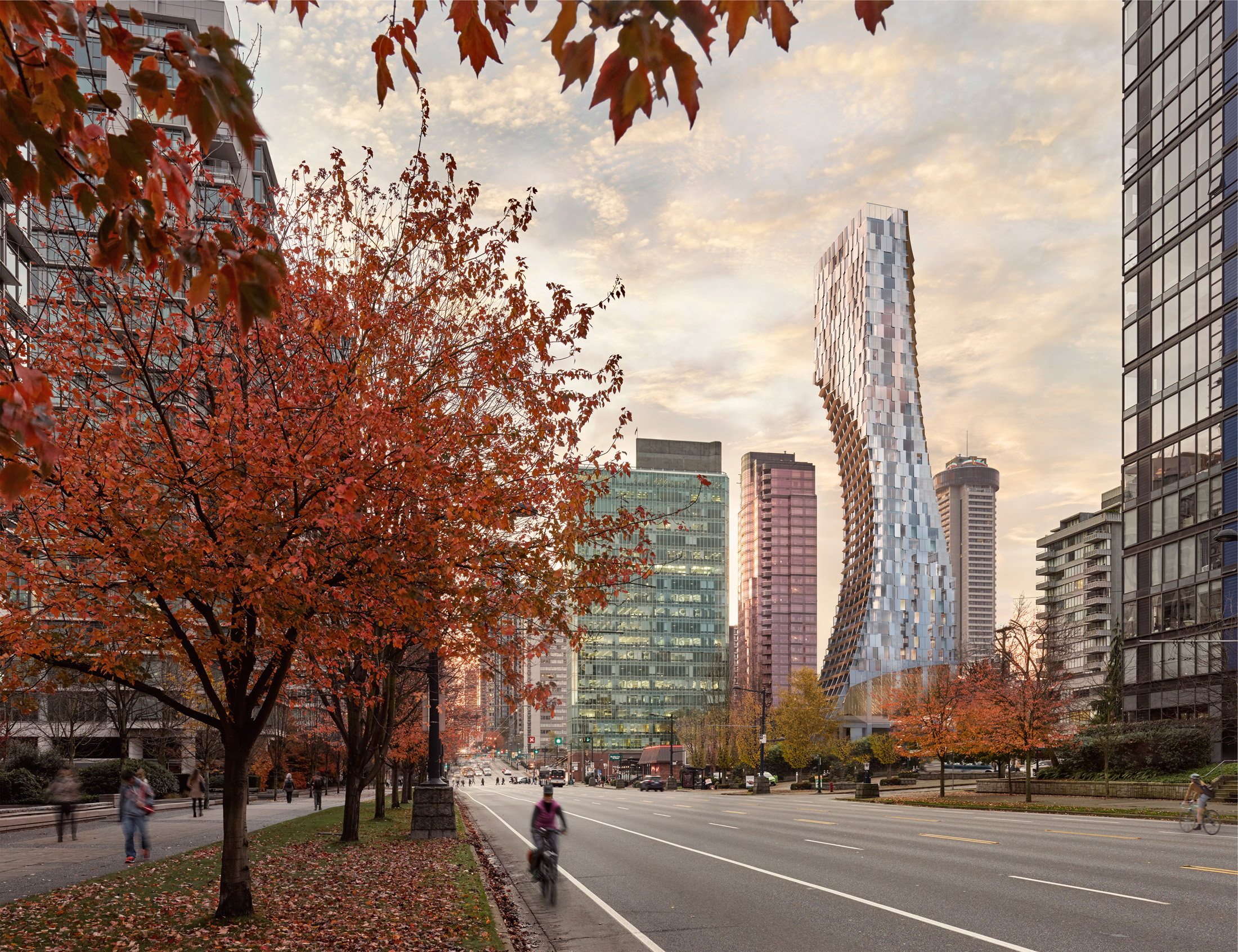
The forthcoming development, 1550 Alberni Street, Vancouver.
Ian Gillespie
Building culture.

When Ian Gillespie was a boy, living with his parents in Port Coquitlam, B.C., a visit from a cousin changed his life. From his bedroom in the small bungalow where his parents still reside, Gillespie heard the crunch of car tires on the driveway. He peered out the window to see who was there. Before him was an object of beauty the likes of which he’d never seen before. His cousin Rod Schroeder was driving a red Jaguar XKE, a vehicle so elegantly designed, it earned a place in the permanent collection of the Museum of Modern Art in New York. He asked his cousin what he did for a living. Schroeder told him he was the CFO of Daon Development, a property development juggernaut co-founded by Jack Poole. Gillespie’s career path was set on the spot. “That’s how I ended up in the real estate business,” he says.
Today, Gillespie’s company, Westbank, is 25 years old and has dozens of architecture and art projects underway in Vancouver, Toronto, Seattle, Calgary, and Tokyo. His portfolio runs the gamut from social housing to the most extravagant condominiums and hotels. Gillespie has teamed up with top Vancouver-based architects like Gregory Henriquez and James Cheng, as well as international stars like Bjarke Ingels and Kengo Kuma to erect some of Vancouver’s most imaginative buildings. In a city not known for its architecture, Gillespie’s buildings stand out, and he wants to be known as someone who transforms the landscape through his love of art, design, and beauty.
Westbank operates from the Shaw Tower on a rarified chunk of waterfront real estate. The building was designed by Cheng and built by Westbank, and is co-owned by Gillespie and business magnate Jim Pattison. On this day, Gillespie buzzes across the plaza for lunch at the Fairmont Pacific Rim, also designed by Cheng and co-owned by Westbank. At the Lobby Lounge and RawBar, where the staff know him by name, he orders healthy fare—miso soup, a yam roll, and an avocado roll—which is probably why, at age 56, he still has a runner’s lean physique. (In his youth, Gillespie was one of Canada’s top middle distance runners.)
Over lunch, Gillespie dismisses critics who argue art and beauty are middle-class luxuries that ought to take a back seat to necessities like building social housing. He believes it’s possible to do it all and points out that human beings’ love of—and indeed need for—art stretches back to prehistoric times. “Go look on the walls of any ancient burial or ancient structure or cave wall, and tell me that the drawings on the sides aren’t culture being passed on,” Gillespie says. “You’re telling me we can’t deal with all of our problems and also build beauty and add culture?” The Oakridge Centre redevelopment, one of Westbank’s most ambitious projects to date based on sheer scale, has a public art budget of more than $8.2-million on a $5-billion project. Gillespie has partnered with QuadReal Property Group to redesign the 28-acre site. Slated for completion in early 2027, it will include homes for 6,000 residents in a mix of towers and low-rises, a 10-acre park, office and retail space, a performing arts academy, a community centre, a daycare, and art. Lots of art.
His buildings, sustainable design philosophy, and commitment to public art win Gillespie awards and kudos around the world, but at home he’s a polarizing figure. Some of the backbiting is driven by professional jealousy of a man who knows his way around city hall, and has a knack for negotiating and getting what he wants. He readily boasts that the quality of his work is the reason for his success.
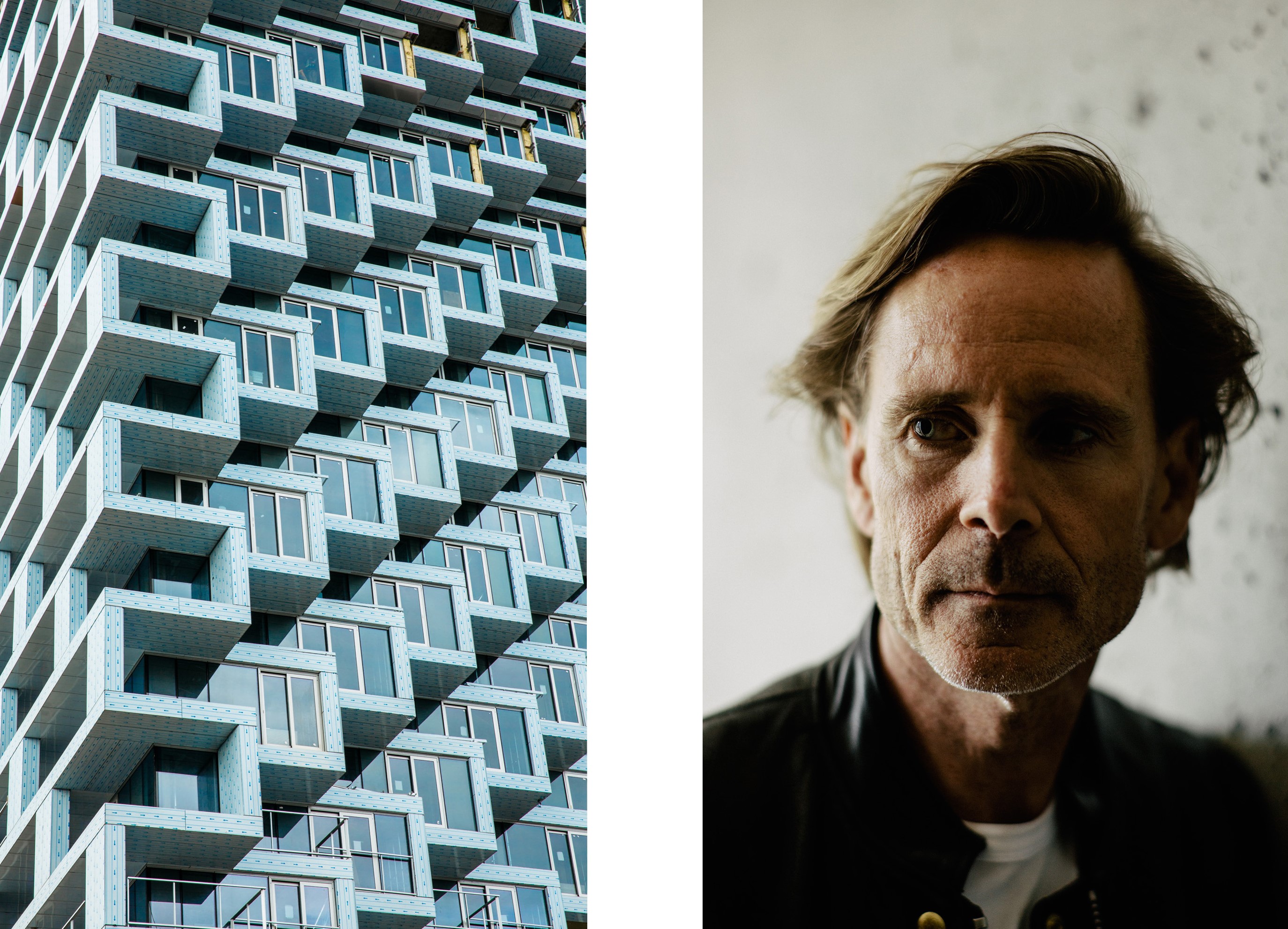
Left: Vancouver House designed by Bjarke Ingels. Right: Gillespie portrait for NUVO by Grant Harder.
Whether or not it’s true, that level of self-assuredness doesn’t always win friends. Combined with the fact that Westbank aggressively markets his luxury condominiums to wealthy overseas buyers, this goes some way to explaining why Gillespie, alongside outgoing mayor Gregor Robertson, has become a Twittersphere scapegoat for those who blame city hall and developers for Vancouver’s affordability problem. Gillespie defends his business model, which includes building housing at the highest and lowest ends of the pricing spectrum. “Since when do we not welcome investment in our country? We’re a country of immigrants, and that’s exactly how we built our country.” No one resents someone who moves from Saskatoon or Toronto to Vancouver and buys a home, he notes. The blame is reserved for foreigners, a response he fears could shift public policy in dangerous, xenophobic ways.
Derrick O’Keefe, a founding member of the Vancouver Tenants Union who is running for city council as part of the left-wing Coalition of Progressive Electors, doesn’t see it in quite the same way. He holds Gillespie, along with other developers, responsible for the commodification of housing. According to O’Keefe, wealthy investors, many of them foreigners looking for a safe place to park their money, have driven up housing prices in the city. To him, Gillespie’s high-end towers, no matter how beautiful, are a glaring symbol of Vancouver’s affordability problem. “We should not let him escape his role in fuelling this crisis. How many empty units are in those towers?”
Gillespie supposes government inaction is to blame for the lack of affordable housing, not the arrival of those who can afford to buy at the high end. “It isn’t a problem that housing is too expensive. There are hundreds of parcels of land where we could be building affordable housing. The only people responsible for the lack of affordable housing is ourselves [people in Canada].” Gillespie points out that he, in fact, has built many affordable housing projects and has plans for many more. Former chief planner for the city Brent Toderian says Gillespie could probably quell some of the criticism if he publicized the broad nature of his work. “I think sometimes Ian does himself a disservice by drawing more attention to his expensive projects, when his projects that are in the other direction are some of the most interesting in our city.”
“Sometimes when you are fighting for what you believe in, you’re going to piss a few people off on the way through.”
Gillespie’s reputation as a builder for the elite is somewhat unwarranted, given that one of the projects that cemented his reputation as a changemaker was the Woodward’s complex, which includes a large social housing component. The mixed use development sits on the edge of Gastown, an area that bridges Vancouver’s business district and the Downtown Eastside, a down-at-the-heels neighbourhood notable for its street corner drug dealing and dilapidated single-room-occupancy hotels. In 2004, the city asked for redevelopment proposals for Woodward’s. Henriquez was interested and wanted to partner with Gillespie, who to his mind was the only developer around with enough imagination and drive to successfully transform the site. Before bidding on the job, the two walked the circumference. The area looked sad and lifeless; the old Woodward’s store was boarded up, as were many of the surrounding businesses. “I knew the thing that was needed was body heat—we needed as much density as possible on the site,” Henriquez recalls.
Gillespie and Henriquez beat out a bid by another developer they had pegged as a favourite for the job. The result is an award-winning development that transformed the neighbourhood with a combination of social and market housing, Simon Fraser University’s School for the Contemporary Arts, and a much-needed drugstore and supermarket. The Woodward’s project kick-started other neighbourhood development, which has been applauded by all but the most fervent opponents such as O’Keefe, who say the resulting gentrification is displacing low-income residents.
After Woodward’s, Gillespie became the darling of Vancouver city planners. Toderian first met him around the time of the final Woodward’s project negotiations; since leaving his job with the city, Toderian has done some consulting work for Westbank. Gillespie is not the easiest person to work with, he says. “I’ll be diplomatic and say he’s got a Type A style—it can be off-putting.” Toderian was won over because Gillespie is motivated by a desire to do superb work. Gillespie does not apologize for his negotiating style. “One of the reasons the architects that we work with want to keep working with us is that I fight really damn hard to get stuff built. Sometimes when you are fighting for what you believe in, you’re going to piss a few people off on the way through. But there’s no one who’s going to say I was doing it for the wrong reasons.” Still, he acknowledges that collaboration is key and says when someone has a better idea than his own, he accepts it.
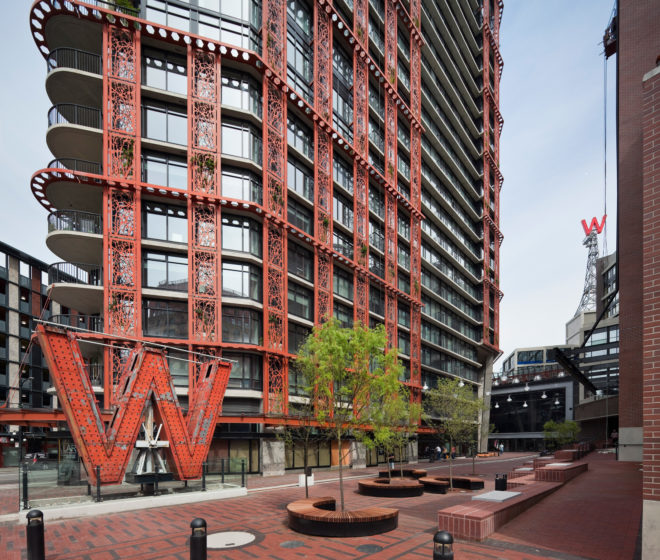
Woodward’s Building, Vancouver.
So how did a kid from Port Coquitlam whose father was an oil refinery worker and whose mother was a psychiatric nurse (they are now retired and are devoted environmentalists) become a developer obsessed with art and design? Once he decided to replicate his cousin’s career path, Gillespie pursued that goal, first earning a bachelor’s degree at the University of British Columbia, where he met his wife, Stephanie Dong, and then an MBA at the University of Toronto. But it was his cousin Schroeder who launched Gillespie’s career by hiring him, first as summer work and then full-time after Gillespie finished his MBA. He says he learned much from his cousin, but eventually Gillespie felt compelled to strike out on his own to found Westbank. Westbank’s first-ever project was London Plaza, a mixed-use project in Richmond, competently executed but nothing special, says Cheng, who has worked with Gillespie for 20 years. When the two began collaborating, the conversation included the value of art and design as a development philosophy, confident sales would follow. “We discussed what we needed to do to convince people to move downtown,” Cheng says. To make downtown living attractive, Cheng and Gillespie knew amenities like restaurants and garden spaces were key to fostering a sense of community. Gillespie later borrowed the German word Gesamtkunstwerk to describe that package: buildings that combine shelter with art, culture, recreation, and beauty. But before they had even heard the term, Cheng says, “We, as a group, knew the way to package it to convey our design idea, which was to deliver a community.” Their first joint project, the Palisades, is a residential development that won the 1998 Lieutenant-Governor Award of Excellence in Architecture. It sold out quickly, launching Gillespie’s career as a developer and giving condominium marketer Bob Rennie what would become a dominant foothold in the downtown market, Cheng says.
The more Gillespie built, the more he learned and the more he pushed the envelope design-wise. “He’s like a sponge,” Cheng says. “He loves travelling and seeing new things. He never stops learning.” Gillespie fell in love with Japanese design and incorporated a traditional tea house into one of the Shaw Tower patios. When he’s not wearing jeans and a white T-shirt, Gillespie favours the designer Yohji Yamamoto. He owns suits, but no ties.
After a while, Cheng suggested that Gillespie try working with new architects to keep his creativity fresh. “We were getting complacent.” He joined Toderian in urging Gillespie to team up with young hotshot architect Ingels for the Vancouver House project. (Gillespie agreed to, even though Ingels had never designed a tower before.) Cheng says success has introduced Gillespie to some of the world’s most creative people, both in the world of architecture and beyond. His fear is that Gillespie will outgrow Vancouver, which he says is, at its core, a conservative city that might not quite be ready for the type of avant-garde design that interests him. “What would be interesting to me is whether we can keep him from flying away.”
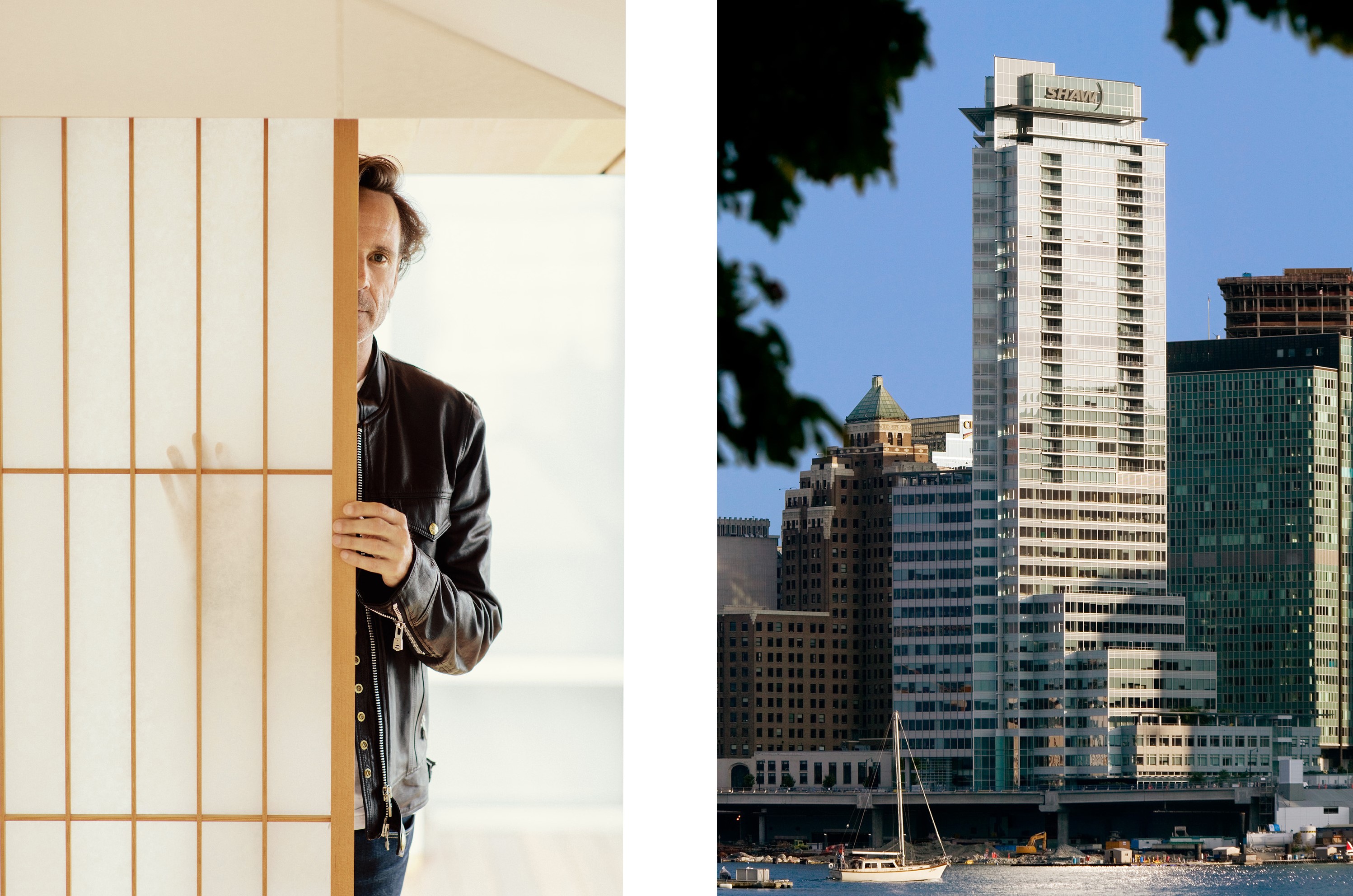
Left: Portrait of Gillespie for NUVO by Grant Harder. Right: Westbank operates from the Shaw Tower on a rarified chunk of waterfront real estate.
Westbank’s latest venture is national. Former Toronto chief city planner Jennifer Keesmaat has been hired to run Creative Housing Society, a new non-profit venture that aims to build massive amounts of affordable rental housing across the country. Keesmaat was still in her role with the city when she met Gillespie, who was working on the Mirvish Village development plans in Toronto. Formerly home to Honest Ed’s, a sprawling discount store, Mirvish Village will contain over 880 units of rental housing, 200,000 square feet of commercial space including a public market and micro-retail for start-ups, a park, a childcare centre, essentially a cultural hub. Keesmaat recalls, “It was very clear to me he wasn’t interested in just building a building: he had broader city-building objectives.”
Keesmaat says she is excited to join Gillespie in a venture that could help mitigate affordability problems that have the potential to destabilize Canada’s largest cities. “He sees this as a great risk.” They will need co-operation from all three levels of government to make it work. “Woodward’s is the model we are seeking to emulate and extrapolate throughout the country,” she says. (At press time, Keesmaat had just announced her running as a mayoral candidate for the city of Toronto.)
As his business continues to expand across Canada and worldwide, Gillespie is gratified to know that some of his children plan to join the venture. His daughter, Lauren, has started working at Westbank, and his son, Sean, also plans to join the business. His youngest son, Ryan, is still in high school. Gillespie describes Westbank as the vehicle that has enabled him to contribute to the cultural fabric of Vancouver, and he hopes it will allow his children to do likewise. Success has also allowed him to become an investor in cultural institutions he cares about, including Goh Ballet Academy, which is now expanding to Toronto and Shanghai. Similarly, his philanthropy reflects his interests: he recently gave $2.5-million to Emily Carr University of Art + Design and $1.5-million to VGH & UBC Hospital Foundation’s Future of Surgery campaign. Says Toderian, “I think he does want to leave a mark, a legacy. And not just in terms of impressive-looking things, but also with ideas that seek to address our challenges, like affordability and homelessness.”
As he leaves the Pacific Rim hotel, Gillespie points to his red Jaguar, the same model as his cousin’s, parked just outside the lobby doors. A testament to one man’s ambition and a symbol of beauty and design.
_________
Never miss a story. Sign up for NUVO’s weekly newsletter.

